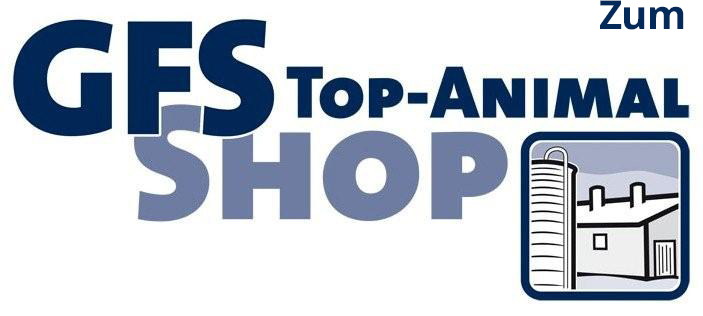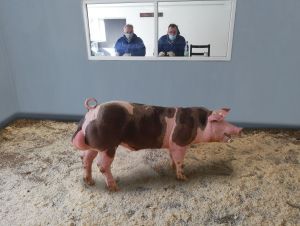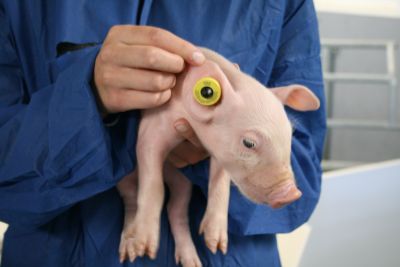GFS performance classes
Die Besten der Besten: Eberselektion streng und stufenweise
- Jungeber beim Züchter: Zuchtwert Ø 125 Punkte
- Persönliche Begutachtung der Eber beim Einkauf
- Zuchtwertsicherheit bei Einkauf: 30 bis 50 %
- GFS-Nachkommenprüfung: Anpaarung jedes Prüfebers an 10 bis 15 Sauen aus mindestens 2 Betrieben
- Mast- und Schlachtleistung der Nachkommen sind Basis für die BLUP-Zuchtwertschätzung und die Einstufung in Leistungsklassen
GFS performance classes: Platinum, gold, silver and bronze
- Boars are classified according to their breeding value
- Breeding value is estimated regularly (at least once a month) and updated
- The breeding value data in the boar database is always up-to-date
- Old and young boars always have to be measured together
- The top 13% of sires are rated platinum
- The next 24% are gold
- 13% are silver
- 17% of the boars are rated bronze
-
Accuracy of the breeding value in GFS progeny tested boars: 80-90%
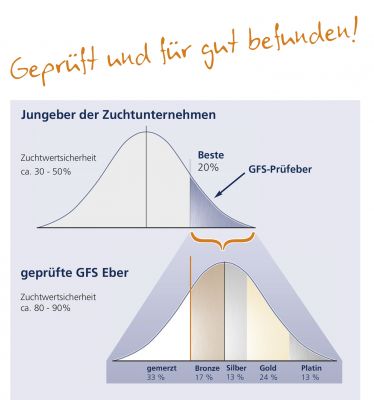
The lower third (33%) of boars are culled – which raises the performance level as a whole!
Process
- Electronic identification of the piglets
- Transmission of insemination data and litter data from the test sites
- Ear tag antenna on the AutoFOM cradle assign the electronic ear tags to the slaughter data
- Progeny test results are incorporated into the breeding value
- Boars are graded into the GFS performance classes bronze, silver, gold and platinum
Numbers
- ca. 28 testing farms
- about 50.000 progenies/year
- weekly over 700 till 800 progenies marked electronically
- 14 sloughterghouses in Germany which liver us the data
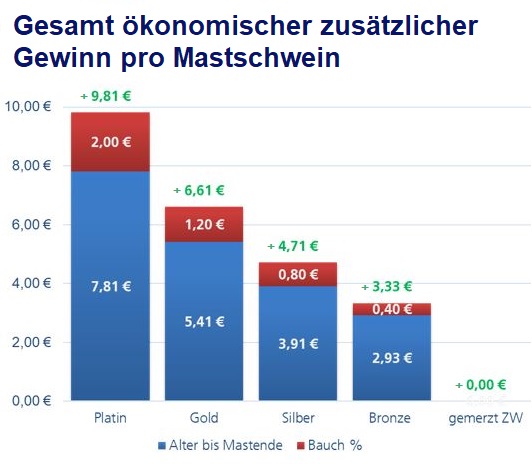
Economic advantage through the use of progeny-tested boars.
The differences in the performance figures of the individual boars differ greatly in the performance classes in some cases. In order to evaluate these genetic differences more accurately in economic terms, the JRC has optimised its presentation on this. Farm influences such as feeding system etc. affect the performance of the offspring of the boar. Therefore, we now calculate the economic advantage per fattening pig on the basis of the breeding values calculated after testing the boar. The breeding values reflect the deviation from the average of the population, so that there are positive or also negative values. First, the average values per trait are calculated and multiplied by the economic factor. In the case of daily gain, this is 0.0376 € per 1 gram of gain. This factor is based on a calculation by the Chamber of Agriculture, which regularly calculates the economic effects of various performance parameters.
Our overview shows an example of how we present the revenues depending on the origin. It can be seen how high the economic advantage per fattening pig of the offspring* of bronze, silver, gold and platinum boars is.
*of a particular origin
Contact Person

Nadine Freise
- 02593/913-427
- 0151-550 14 405
- freise@gfs-topgenetik.de

Susanne Lohmann
- - erweiterte Geschäftsleitung -
- 02593/913-429
- 0151-550 14 386
- lohmann@gfs-topgenetik.de

